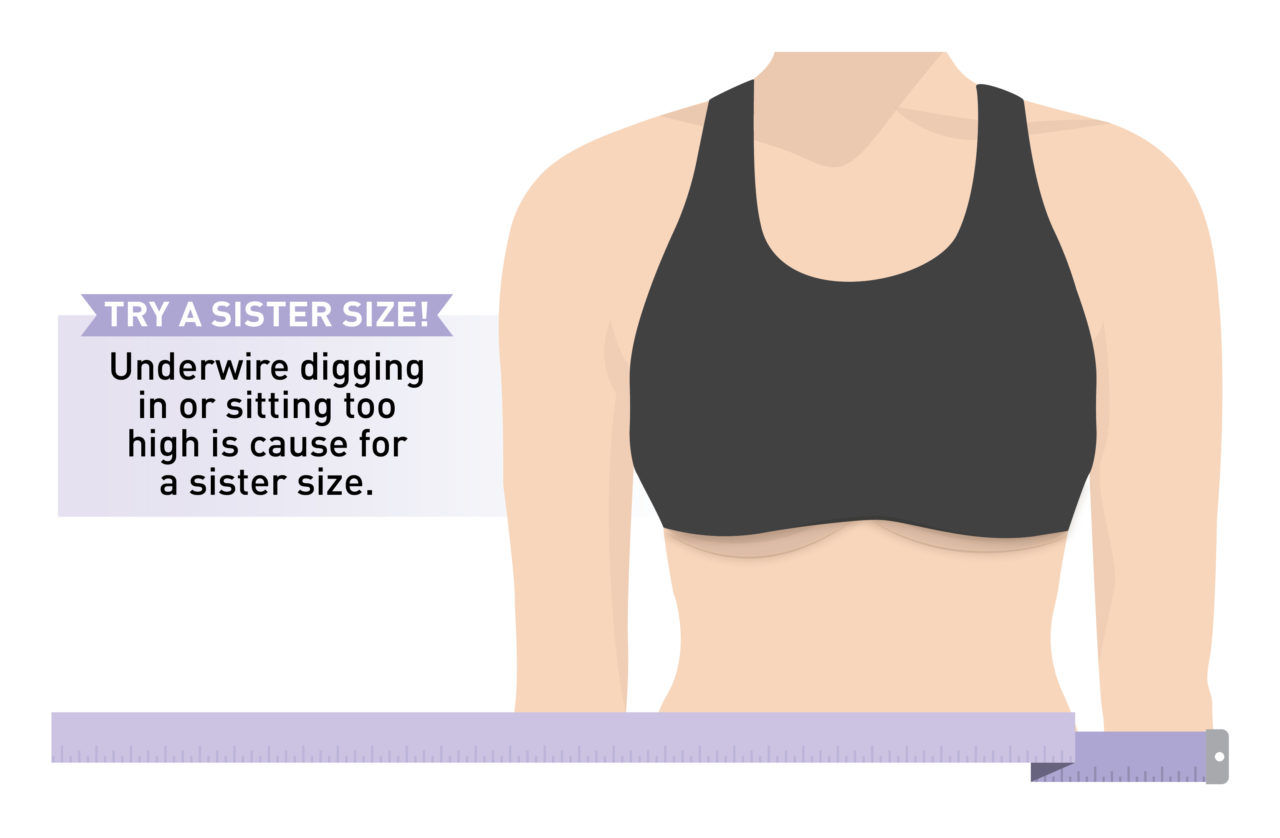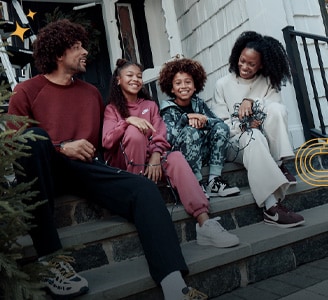Sports Bra Fit and Care Guide
Discover how to find the right fit and help extend the lifespan of your sports bras with these tips and tricks.

Buying and caring for sports bras can be complicated. The right fit can often be elusive, and if not cared for correctly, a bra that previously fit may stretch out and no longer offer proper support. Find your fit and learn how to care for your sports bra with this Pro Tips guide.
SURVIVAL OF THE FITTEST
In order to get the support that you need, it’s crucial that your sports bra has the correct fit. Bra measuring isn’t an exact science, and there are a few schools of thought as to the best measuring technique. Because of that, it’s important to try bras on and check for common problems and solutions.
FOR GOOD MEASURE
Measuring your bra size is a quick, three-step process. To start, put on your best-fitting, non-padded bra and grab a soft measuring tape.
- Band Size – The first step is to measure your band size. Breathe out and snugly wrap your measuring tape around your rib cage, right underneath your bust. This should fall right below the band of the bra you are wearing. To help ensure your measurement is not skewed, make sure that the tape measure is level all around. Round to the nearest even number, and the resulting number is your band size.
- Bust Size – Step two to find your right bra size is to measure your bust. Take your measuring tape and wrap it around the fullest part of your bust. This could be different for every woman, so there’s no wrong place to measure. Round up to the nearest inch and use this number as your bust size in step three.
- Calculate – Finally, subtract your band size from your bust size and use the chart below to determine your cup size. The general rule is that one inch represents one cup size.

For example, if your band measurement is 34 inches and your bust measurement is 38 inches, the four-inch difference will put you at a ‘D’ cup. This makes your bra size a 34D.
Also, keep in mind the concept of “sister sizes.” If a brand doesn’t carry your band size, you may want to try a sister size. For every band size you go up, you should go down one cup size.
For example, if your measurement results in a size of 30C, your sister sizes are 32B and 34A.
Many sports bras come in small, medium, large and extra large sizing. These are often based on your band and cup sizes, so all of your hard work with a measuring tape need not be wasted. Sizes can vary between brands, so make sure to know your measurements, check each brand’s sizing charts and try on the sports bra you’re considering before you make your final decision.
| DIFFERENCE BETWEEN BAND & BUST | 0" - 1" | 1" - 2" | 2" - 3" | 3" - 4" |
| YOUR CUP SIZE | A CUP | B CUP | C CUP | D CUP |
CHECK YOUR WORK
Determine if you are wearing the right bra size with this handy problem and solution guide.
BAND PROBLEMS:
- Off the (First) Hook – When you buy a bra, you should initially be able to wear it comfortably on the loosest hook. This can allow for it to stretch over time. If you have to wear it on the tightest hook right away, your band size may be too large.

- Smooth Ride – Your band should lay flat and straight against your back. A band that rides up is another sign of one that is too large.

- Back Bulge – Inversely, if you notice that your skin is bulging over your band, this is a signal that your band could be too small.

STRAP PROBLEMS:
- Don’t Dig Deep – If your straps are digging in and causing discomfort to your shoulders, it could mean that they are doing more support work than they are supposed to because your band size is too large.

- Slipping By – If you’re constantly having to pull your straps back onto your shoulders, the solution may be as simple as tightening them. However, it may also indicate that you need a different style bra that has straps that sit closer together in the back.

CUP PROBLEMS:
- Mind the Gap – Cups that gape can be caused by a number of problems. You may be able to easily solve this by tightening the straps or it could indicate your cup size is too large. However, the issue might be that the shape of the cups is the wrong style for your breast type. Look for cups that are angled or cut small if this is your issue.

- Say No to Overflow – If you are experiencing spillage on either the side or top of your cups, it is a sign that you need to go up a cup size.

- Down to the Wire – A common cause of discomfort is underwire digging in or sitting too high on your breast. You can typically solve this issue by using a sister size with a smaller band and larger cup.

- Iron Out the Wrinkles – Sport bras that wrinkle and do not fit smoothly across your chest are likely too large in the cup size.

- Under the Yoke – The center ‘yoke’ of your bra, also sometimes referred to as the ‘gore,’ is the piece of material that connects the cups. Ideally it should sit flatly against your chest. A ‘floating’ yoke can indicate that your cup size is too small or your band size is too large.

TAKE CARE
Taking care of your sports bras and recognizing when it is time for a new one can help ensure that you are always getting the support that you need.
HOW DO YOU WASH A SPORTS BRA?
Washing sports bras by hand is the best way to extend the lifespan on your bra. It can be gentler on the fabric and help to retain elasticity.
To hand wash, fill your sink with lukewarm water and an alcohol-free detergent. Soak your bra for around an hour before gently using your hands to massage out any dirt. Rinse in cool water, and then allow it to air dry.
If using a washing machine remains more your speed, be sure to use a lingerie bag and set the machine to the gentlest cycle. Clasp any bra that is not a pullover to prevent it from getting caught in the machine.
Even if you use a machine to wash your bra, you should still air dry it. The heat from dryers can wear out and warp the elasticity of your bras.
HOW LONG SHOULD YOU HAVE A SPORTS BRA?
A general rule of thumb is to not use a bra for over a year. The older a bra gets, the more the elasticity can wear out and the less support you could receive. A poking underwire, broken hooks, loose bands and signs of fraying can also mean it’s time for an update. Keep in mind that if you recently went through a weight change your bra size might have changed as well and you will need new sports bras to accommodate.
Having to say goodbye to a favorite sports bra can be tough, but recognizing when it’s time for a new one can be almost as important as sizing.
Now you can celebrate knowing your specific bra size and learning how it should fit your body. Now you can discover what styles and support levels are best for you and your workouts with our guide on how to choose the right sports bra.








